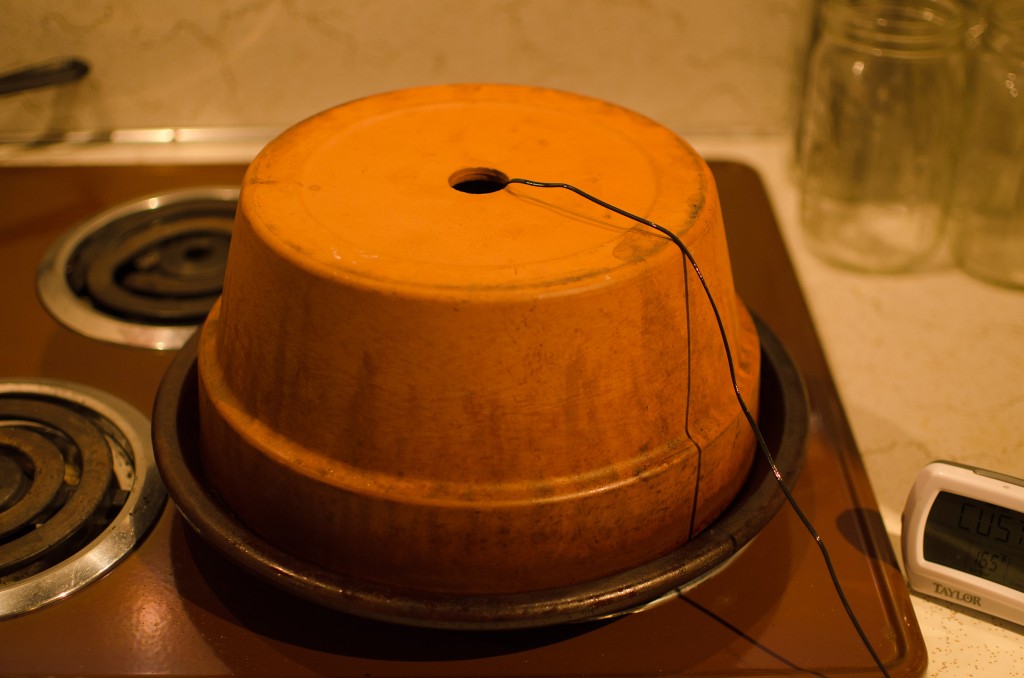Traditional mac and cheese is a baked dish consisting of macaroni pasta covered in cheese sauce and topped with bread crumbs.
No part of traditional mac and cheese is gluten-free.
The sauce is emulsified by with a roux – a mix of flour and fat that serves to thicken and emulsify the sauce and prevent the cheese from “breaking” (separating into curds and whey, which gives a grainy texture).
The macaroni is a dried pasta made with durum wheat.
The topping is optional, but provides a nice contrast in texture.
There are workarounds for all of these, and there are plenty of options. For quick and convenient mac and cheese, I like the Amy’s Gluten Free Mac And Cheese.
But sometimes it’s good to splurge a bit.
Mac and cheese is one of those things that is made traditionally for the sake of being traditional.
Macaroni works just fine, but the point of the pasta is to hold the sauce. And thicker sauces benefit from pasta shapes with more surface area. I personally prefer fusilli (sometimes called rotini), a kind of spiral stick pasta. All the good gluten-free pasta manufacturers make fusilli pasta.
The only real reason to bake mac and cheese is to crips the topping. You can accomplish the texture benefits in other ways (crispy bacon bits, chives, or even pre-toasting bread crumbs). All that’s missing is the yummy, crispy browned cheese, thanks to the Maillard reaction. (More on that in a bit.)
An idea I’ve been playing around with – but don’t have entirely worked out yet – is to brown the top of each serving by grating parmesan cheese on top of the mac and cheese and browning it with a blowtorch.
The cheese sauce is made on the stovetop, and then cooked pasta is mixed in. At this point, it’s cooked and perfectly edible. I often convince myself there is no point in dirtying a casserole – or waiting to eat the yummy mac and cheese.
While we’re at it, why dirty another pot cooking the pasta before adding it to the sauce? We’re going to use liquid (typically dairy) to make the sauce, so let’s just cook the pasta in the dairy!
The hare-brained geniuses at Modernist Cuisine started this whole one-pot mac and cheese thing several years ago, and they looked into why Kraft Mac And Cheese works so well where many home recipes fail. And it comes down to science – an emulsifying salt called sodium phosphate. They use a more easily attainable alternative, sodium citrate.
You can get sodium citrate at well-stocked food shops, or order it on Amazon. (It has to be the salt version – citric acid will do the opposite of what you want, and it is used in cheesemaking to create curds from milk.) But I never have sodium citrate on hand when I want to make mac and cheese, so I use something that often is employed as an emulsifier – mustard seed powder. (Mustard is a common ingredient in mac and cheese.)
Cheese selection is crucial. It’s one of the headliners of the dish, after all.
Since emulsification is the name of the game, we can use the dirty secret of the cheese world – American Cheese. We’re not talking about “processed cheese food” – no knockoff Kraft singles for you. Real American cheese is a mix of firm cheeses like cheddar, formed into blocks. They include emulsifiers to keep everything nice and uniform. And it can be purchased in loafs from deli counters.
You can also use another emulsified cheese food product – Mascarpone. Which is what I use.
We need a mix of flavors, too. All the fat will tend to mask flavors, so having some more strongly flavored cheeses will help. Experiment – sharp cheddar, smoked gouda, gruyere, just about anything.
Theron’s Mac And Cheese

